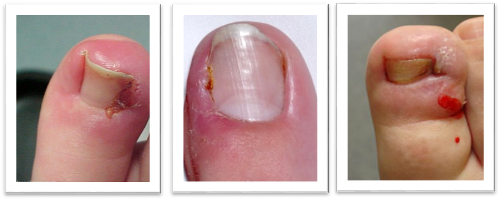A very common complaint we treat in our clinic is swollen feet and/or ankles. The technical term we use to describe this condition is “peripheral oedema”.
There are many causes for swollen feet and ankles. Most are likely to resolve quickly, however, some of the causes can be the sign of a health concern which needs to be addressed.
When the swelling affects only one of your feet, most likely the swelling is the result of a local problem, ie an injury or a problem with one of the veins. Swelling in both feet is considered a systemic problem – a problem which affects the entire body.
There are two types of swelling:
- Pitting Oedema, and
- Non-pitting oedema
1) Pitting Edema: Usually results from water retention and is associated with things such as heart failure, pregnancy and systemic diseases.
2) Non-pitting Edema: Is the most common type of foot swelling, usually a result of injury.
The most common causes of swollen feet and ankles in our clinic are:
Injuries
Soft tissue injuries of the foot and leg can lead to localised swelling. The severity of the swelling can depend on the injury. These injuries can include sprained ankles, torn tendons of the foot to name two.
Medical Conditions
a) Heart
Congestive heart failure and hypertensive heart disease can cause swollen feet and ankles. When heart function decreases, the heart is not able pump the blood around the body as effectively. Pressure builds up in the blood vessels causing fluid to leak into the surrounding tissues. Gravity then causes this fluid to pool around the feet.
b) Kidney
b) If your kidneys are not functioning properly, they can’t eliminate salt and fluid effectively enough which leads to a build –up of pressure on the blood vessels, causing fluid to leak out into the surrounding tissues. Swollen feet and ankles is often one of the first signs of kidney problems. The swelling tends to be worst in the morning.
c) Liver
Liver disease can cause a change in the levels of hormones and fluid-regulating chemicals leading to fluid retention. –
d) Arthritis
Swelling from arthritis tends to be sporadic, coming and going at different times. It is most commonly caused by active inflammatory synovitis (inflammation of the membrane that lines the joint) associated with rheumatoid arthritis.
Pregnancy
Three reasons your feet may swell during pregnancy:
a) the excess weight gained puts more pressure on the legs and feet
b) the expanding uterus can place pressure on the blood vessels for the legs and
c) pregnancy hormones cause the body to retain fluids
Severe swelling of feet in pregnancy can be a sign of pre-eclampsia which is a medical emergency.
Medication Side Effects
The most common medications causing foot swelling are:
a) Anti-Inflammatories
b) Hormone Drugs: e.g. contraceptives
c) Antidepressants:
d) Diabetes drugs:
e) Blood-Pressure Medications
Venous Insufficiency
Veins work to pump blood back up from the feet and legs to the heart through one-way valves. If these valves stop working properly due to weakness or damage, fluid can seep back down and pool causing a swollen ankle and foot. –
Cellulitis
Cellulitis is caused by a bacteria which enters the body through a break in the skin. The break can be so small sometimes, that you can’t see it. Cellulitis most common affects the skin on the lower legs or face. The area appears red, hot and swollen.
Cellulitis is treated with antibiotics and can last anything from a few days to a number of months.
Obesity
People who are overweight or obese often develop swelling in their feet and ankles. The reason for this is that excess body fat compresses the leg and abdominal veins, this increases pressure within the blood vessels which then promotes fluid leakage into the soft tissues – swelling the feet and ankles. If you are inactive, this inactivity leads to blood pooling, which further increases pressure within the leg veins.
Prolonged Standing
Standing for long periods can reduce blood flow to the muscles and stops the “muscle pump” (regular muscle movements) that returns blood from the feet and legs to the heart. Fluids in the body won’t move unless leg muscles contract. When blood or other fluids don’t move properly, veins get inflamed and/or feet, ankles and legs swell.
Tight Shoes or Socks
Restriction of blood flow can be caused by wearing tight shoes and socks. The pressure caused by the shoe or sock can cut off the pathways for the tiny blood vessels to pump fluid out of the area and therefore it pools in the immediate area before and after the restriction.
So what can I do to prevent swollen feet and ankles? Stay tuned for our next blog!
Please note: the information provided is of a general nature and should not be used as a diagnosis!










